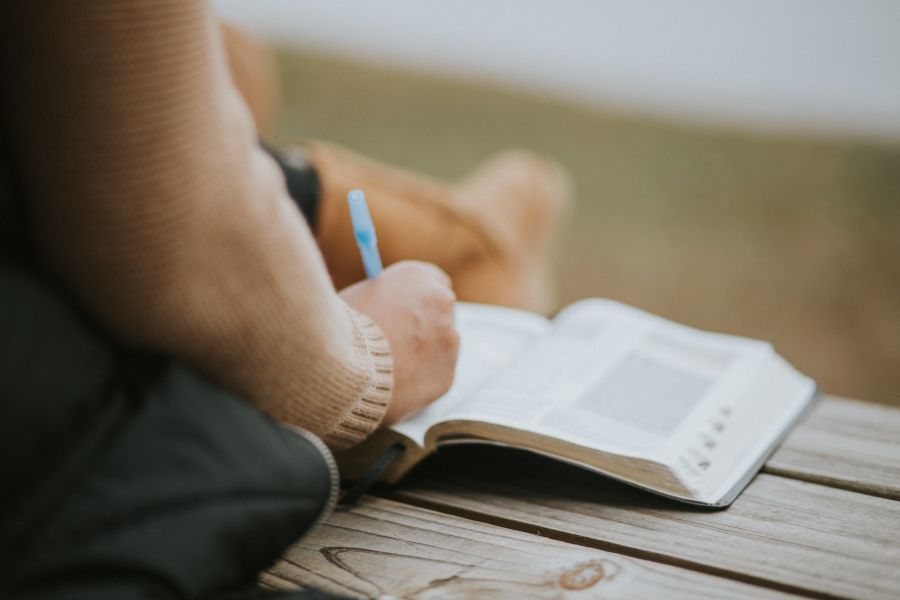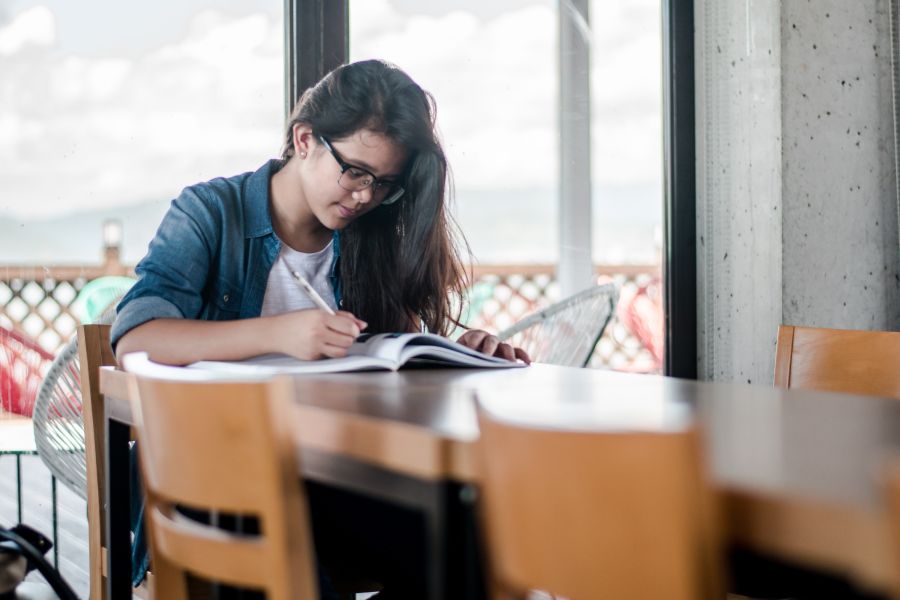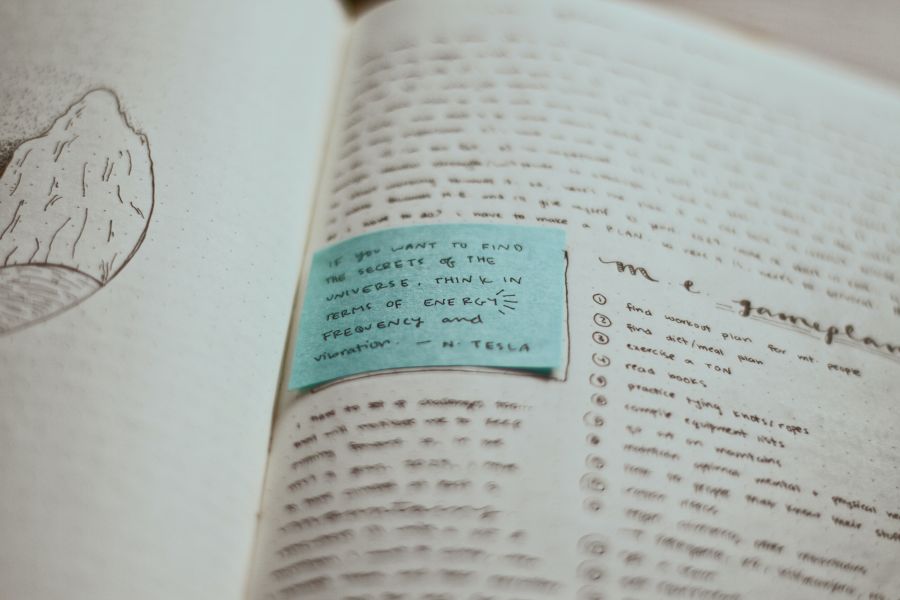七年级英语试讲教案1
Unit 6 Do you like bananas ?
Section B 2b部分
教学目标:1.What do you eat/like for breakfast?句式;
2.同位语、宾语从句复习;
3.I like...,but I don’t like...句式运用。
教学过程:1.通过问题导入阅读主题:What is healthy food? What do you eat for breakfast/lunch/dinner?Do you eat healthy food?
2.短语汇集:sports star 体育明星 volleyball star 排球明星eating habits 饮食习惯really adv.确实、真地one last question 最后一个问题 after dinner 晚饭后
want to 想要 want to be 想要变得
3.Sports Star Eats Well!
Sports Star Eats Well!means Sports star eats healthy food.
4.David asks the volleyball star,Cindy Smith,about her eating habits.
the volleyball star,Cindy Smith 同位语
about 介词 关于
Eating habits 饮食习惯
5.What do you like for breakfast?你早餐喜欢什么?练习:1.breakfast/lunch/dinner 替换练习
2.like换为eat 练习
6.I love fruit.I think it’s healthy.我喜欢水果。我认为水果很健康。
I think+宾语从句
7.I don’t like bananas.But I like oranges and apples.我不喜欢香蕉,但是我喜欢橘子和苹果。
8.What about lunch?午餐呢?
相当于What do you like for lunch?
比较:what about与how about
10.I really like it.我很喜欢(沙拉)。
really 副词 强调程度。
I really hate English.我真的讨厌英语。
11.They are not healthy.它们不健康。
主系表结构。练习:我很健康。
12.I don’t want to be fat.我不想变胖。
want+动词不定式(to+动词原形) 想要......练习:1.我想变胖。
2.我想变好。
七年级英语试讲教案2
初一英语外研版(上)教案 Module 8 Choosing presents
一、学习目标: 1.单词和短语:
card, party, present, would, always, great, cake, never, special, eat, give, sing, happy, secret, CD, cinema, concert, magazine, scarf, silk, shirt, T-shirt, choose, exercise, wear, expensive, clothes, shoes, spend, money, film, song, match, weekend, at weekends, dear, hear, hear from, afraid
2.交际用语:
1)—Would you like to come to my birthday party? —Yes, I’d like to.When is it? 2)Great! 3)It’s a secret.3.重点句子:
1) Daming always gets birthday presents! 2) She often goes to the cinema.3) What do you usually do at a Chinese birthday party? 4) We sometimes give birthday cards.5) My mother never makes a birthday cake.
二、重点及难点:
1.频度副词的使用及在句中的位置。 2.动词第三人称单数形式。
三、教学设计: Unit 2 She often goes to concerts.ⅠTeaching model Reading and writing.
ⅡTeaching method communicative approach ⅢTeaching aims
1.To get information from the reading material about choosing birthday presents.2.To write a description of one’s partner.3.To get to know compound nouns.ⅣTeaching Objectives
Key vocabulary: CD, cinema, concert, magazine, scarf, silk, shirt, T-shirt, choose, exercise, wear, expensive, clothes, shoes, spend, money, film, song, match, weekend, at weekends ⅤTeaching aids Recorder, OHP, video ⅥTeaching Steps Step 1 Warming-up 1.Review the text of Unit 1.
2.Show some pictures, ask the students to look at the pictures, then talk something about the pictures. 3.Introduce the new words.4.Read the new words.Step 2 Practice 1.Look at the pictures in Activity 1.
2.Read through the list of presents and have the students repeat them after you chorally and individually.3.Match the words with the pictures.
4.Check with a partner.
5.Call back the answers from the whole cla.Keys:
1.a concert ticket
2.a magazine
3.a silk shirt 4.a box of chocolate
5.a T-shirt 6.a CD 7.a scarf 8.a cinema ticket
9.a football Step 3 Reading.1.Play the recording.2.Ask the students to read through the paage.3.Match the people with what they like doing.4.Check with a partner.5.Call back the answers from the whole cla.Keys: 1.c 2.b 3.d 4.a 5.e
6.Choose presents from the pictures in Activities 1 for them.7.Check with a partner.8.Call back the answers from the whole cla.Keys:
1.T-shirt 2.a silk dre, a scarf, and a box of chocolate
3.a magazine and a cinema ticket 4.a CD, a concert ticket 5.football 9.complete the paage with the correct form of the words from the box.10.Check with a partner.11.Call back the answers from the whole cla.Keys: 1.spends
2.money
3.silk
4.expensive 5.concert 6.weekends
7.matches
8.choose Step 4 Writing and speaking.
A.Write these sentences with ’ (apostrophe).1.Read through the sentences.2.Write these sentences with ’ (apostrophe).3.Check with a partner.4.Call back the answers from the whole cla.B.Make a list of things you like and do.1.Ask the students to make their lists individually.2.You may care to suggest they write five things they like and five things they do.
C.Work in pairs.1.Ask the students to talk about things they like and do . 2.Write a description of their partner.Step 5 Important and difficult points.She has got 11 silk scarves, 20 shirts and a lot of shoes.在英语中,有些名词表示由两部分构成的东西。这些名词常常只用复数形式。做主语时谓语动词要用复数,表示数量时常与“数词+ pair(s) + of”搭配。 如:
shoes鞋
trousers 裤子
glaes 眼镜
gloves手套
shorts短裤
sciors剪刀
chopsticks筷子
That pair of trousers is Tony’s. 那条裤子是托尼的。 Sciors are used to cut things. 剪刀是用来剪东西的。 Step 6 Do exercises: A、单词拼写:
1.I have two ______(双)of new shoes.2.The clothes are very nice.I don’t know which one to ______(选择).3.I have two______(票).One is for my mother, the other is for my sister.4.How much is this ____________(杂志)? 5.How much do you _________(花费) on these presents? 6.Please give me a _______(音乐会) ticket.7.He’ll buy two _____(盒子) of cookies for his son.8.This is a _______(丝绸) shirt.9.I don’t know those ________(歌手).10.My aunt sells ___________(衬衫).Answers: 1.pairs 2.choose 3.tickets 4.magazine 5.spend
6.concert 7.boxes 8.silk 9.singers 10 .shirts
B、翻译下列句子:
1.他喜欢阅读,但不喜欢去看电影。
__________________________________________________ 2.她从末去看足球赛。
__________________________________________________ 3.他既不喜欢打蓝球,也不喜欢踢足球。
__________________________________________________ 4.我妹妹经常去听音乐会,并且常买些她喜欢的歌手的唱片。 __________________________________________________ Answers: 1.He likes reading, but he doesn’t like to go to the cinema.2.She never goes to the football match.3.He doesn’t like playing basketball or playing football.
4.My sister often goes to concerts and she usually buys CDs by her favourite singers.
七年级英语试讲教案3
Unit 5 一、【教学目标】
(一)语言知识
语音 /t/ /d/ /ts/ /dz/ /tr/ /dr/ /l/ /m/ /n/
词汇
掌握wake,early, first,day, term,must,still,by,on foot,the same to,usually,always,Ms.,boat,ship,sea,train,by plane/air/airplane, etc.
理解 Subway Worm reporter,Net Bar,roller skating Measure dining hall,dormitory bookstore,etc.
(二)语法
1.一般现在时(Simple present)
2.频度副词(Adverbs of frequency)never, seldom, sometimes, often, usually, always, once, twice
3.现在进行时(Present continuous)
I’m looking for a book.
Are you doing your homework?Yes, I am./No, I m not.
Is he/she...?Yes, he/she is./No, he/she isn’t.
What are you doing now?I’m playing computer games.
What is he/she doing?He/She is...
4.谈论交通方式(Talking about means of transport)
How do you usually go to school? I usually go to school by bike.
(三)功能用语与话题
1.采访(Interviews)Our guest today is Michael from Cla 2, Grade 1.
2.谈论日常生活(Talking about routines)
3.学校建筑(School buildings)swimming pool, playground, library, dormitory, lab, canteen, gym
4.谈论兴趣喜好(Talking about interests, likes and dislikes)I like the swimming pool best.Why do you like English? Because it’s interesting and easy.
5.借物(Borrowing things)How long can I keep it? Two weeks.
6.新闻(News)、海报(Poster)Attention, please! Here is the news.
7.谈论学校活动、科目和时间表(Talking about school activities, subjects and timetable)
8.谈论学校生活(Talking about school life)
(四)能力培养
【听】
能听懂谈论校园生活中比较熟悉的话题,识别主题,获取主要信息。
【说 】 1 能根据提示词说出意思连贯的校园生活的句子。
2 能用简单对话描述校园生活。
3 能根据图片或借助他人帮助描述自己或他人的校园生活。
4 能与他人合作进行角色扮演,表现校园生活。
【读】 1 能理解简单的书面表达。
2 能准确地朗读课文。
3 能读懂表现校园生活方面的文章,包括校园新闻、海报、遗失声明、失物招领等。
写
能写出表现校园生活方面的简单句子。能写出简单的校园新闻、海报、遗失声明、失物招领等。
情感态度
培养学生积极向上的情感、活泼开朗的个性、浓厚的学习兴趣和大胆实践的精神,提高学习效率,培养学生热爱学校生活,乐于学校生活的意识。
学习策略
积极探索适合自己的英语学习方法,利用现实生活中的学习资源,培养任务型学习方法与技巧。
二、【教材分析】
本单元的交际用语主要是围绕学生的学校生活展开的,谈论学生的上学方式、作息时间、课程安排、业余生活等内容,这些内容为学生所熟悉,便于展开讨论。
本单元的语法内容主要是学习一般现在时、现在进行时以及表示频度的副词。
Topic 1
Section A
【教学目标】:
1.谈论交通工具及如何上学。
2.学习句型:How do you usually come to school?
I usually come to school by subway.
【重点】1a和3a。
【难点】谈论交通工具及如何上学。
【教具】
录音机
【课时建议】:1~2
【教学过程】:
第一步:复习
1.教学生如何在开学的第一天相互问候。
T: Good morning, cla!
S: Good morning, Mi.../Mr...
T: Nice to see you again!
S: Nice to see you, too.
学习问候语:
T: Happy New Year!
S: The same to you.
然后老师说:Boys and is the first day of our new term.
解释today, new term。
老师说:I often come to school by bus.My son often takes the subway to school.What about you?
学习词组by bus, take the subway。
Notes: subway(AmE)=underground(BrE)
2.听录音3a,回答问题:
(1)How does Kangkang usually come to school?
(2)How does Sally always come to school?
两人一组作对话,然后请3~4对同学到前面表演对话。(对参加表演的同学给予鼓励。)完成3b。
第二步:呈现
1.老师向一些同学依次展示并学习词组:wake up, get up, go to school, by bike等,然后做动作练习。要一名同学在前作动作,其余同学猜测词组。
2.听录音1,回答问题:
What’s the time? / Is it time to get up?
Who wakes Kangkang up?
完成1。
3.利用图画,完成2。
4.听录音4,完成4。
第三步:巩固
1.放录音1和3a,学生跟读。
2.学生两人一组表演1和3a。
第四步:练习
1.分组活动,谈论自己早晨的活动情况。
2.双人活动,分别用不同的交通工具图片进行问答:
A:How do you usually come to school?
B:I usually come to school...
例如:on foot, by bike, by bus, by car, by train, by subway, by boat/ship, by plane/air,完成4。
3.让学生做一个调查报告,调查全班同学“How do you usually go to school?”按人数从多到少列成表格,向大家汇报:In our cla, fifteen students go to school by bike...完成5。
第五步:综合探究活动
1.学生以表格的形式展示自己的家人通常所采用的交通方式。
2.请同学据自己所了解的情况,介绍其它中学生早晨的活动情况,如:
“In our cla, some students usually wake up at 6∶30.They get up at 6∶35...”
Section B
【教学目标】:
1.复习Section A。 2.学习频度副词。
【重点】1,2和3a
【难点】:频度副词
【教具】
录音机
【课时建议】:1
【教学过程】:
第一步:复习
1.复习Section A 4,进行a chain work 活动,按照自己的想法回答问题:How do you usually come to school?尽可能不重复前面同学的答语。
2.两人一组,使用自己准备的图片,谈论其他人的上学情况。
3.老师手指图画(一人正在骑自行车)。
This is me.I usually ride a bike to school.教学ride a bike。
介绍go home by subway,walk to the park, go to the zoo by bus 等等。
让同学挑选自己喜欢的方式。手拿图画谈论自己。例如:
I want to go to school by bus.
4.双人活动,两同学各指一幅3a图画相互介绍:
This is....He/She usually walks to school. 完成3a。
5.双人活动,看3a图进行问答:完成3b。
A: How does Li Xiang usually go to school?
B: He usually rides a bike to school.
第二步:呈现
1.老师教学频度副词:never, seldom, sometimes, often, usually,
2.学生根据自己的实际情况描述自己的日常生活。例如:
I never come to school late. Sometimes I walk to school.
3.听录音1,回答问题:What time does Michael get up on weekdays?
How does Kangkang usually go to school?
。 always
七年级英语试讲教案4
Unit 5 Our School Life Topic 1 How do you usually come to school? Section A needs 1 period.Section A需用1课时。
The main activities are 1a and 2a.本课重点活动是1a和2a。 Ⅰ.Aims and demands目标要求
1.(1) Learn some means of transportation: by bike, by subway, by bus, on foot, by plane, by car, by train, by ship, by boat (2) Learn other new words and phrases: gate, the same to, come on, go to school, Ms., grandmother, group 2.Learn adverbs of frequency: often, usually, always 3.Review the present simple tense.—Do you often come to school by bike? —Yes.I do./No, I don’t.
4.Talk about how to go to school.—How do you usually come to school? —I usually come to school by subway./I always come to school by bus.Ⅱ.Teaching aids 教具 录音机/交通工具的模型/图片
Ⅲ.Five-finger Teaching Plan 五指教学方案 Step 1 Review 第一步 复习(时间:5分钟) 复习日常用语并呈现1a内容。 Ⅳ.疑点探究
本课我们学习了介词by表示“用,靠;通过,借助于(方式、手段)”时的用法。如:by car, by plane, by ship等。
用来表示交通方式的介词还有in和on。如:in a car, on a bus等。此时交通工具前要加限定词。但on foot意为“步行;走”。foot前不需任何限定词,foot也不能用复数。(建议:教师可在总结课上或练习课上补充。) Section B needs 1 period.Section B需用1课时。
The main activities are 1a and 2a.本课重点活动是1a和2a。 Ⅰ.Aims and demands 目标要求 1.Learn some new words and phrases: weekday, early, bird, catch, walk, ride, park, do (one’s) homework, watch TV, television 2.(1)Go on learning adverbs of frequency: seldom, never, sometimes (2)Review the present simple tense.I always get up at about six o’clock.Li Xiang often comes to school by bike.3.Go on learning adverbs of frequency and means of transportation in different expreions.(1) I seldom walk to school.I never go to school by subway.(2) —How does Maria go home? —She sometimes goes home by subway./ She sometimes takes the subway home.4.Encourage the students to be diligent.The early bird catches the worm.Ⅱ.Teaching aids 教具
Section C needs 1 period.Section C需用1课时。
The main activities are 1a, 2 and 3.本课重点活动是1a, 2和3。 Ⅰ.Aims and demands目标要求
1.(1) Learn other words of frequency: once, twice (2) Learn other new words and phrases: life, American, or, few, have lunch, at school, day, have a rest, play, basketball, football, go swimming, and so on, ball, more, talk, game, listen to, music, read, library, must, first, week, every 2.Learn how to expre frequency.How often do you go to the library? Once/Twice/Three times a week./Very often./Every day./Seldom … 3.Talk about the daily activities.play soccer, play basketball, read books, go swimming, go fishing, listen to music, watch TV, do one’s homework, go to the park, meet friends, cook, go to the zoo 4.Learn about the differences of the school life between American students and Chinese students.Topic 2 He is running on the playground.Section A needs 1~2 periods.Section A需用1~2课时。
The main activities are 1a, 2a and 3.本课重点活动是1a, 2a和3。 Ⅰ.Aims and demands目标要求
1.(1) Learn the names of school buildings: playground, gym, dormitory, lab, computer room, dining hall, claroom building, swimming pool (2) Learn other new words: make, card, boring, soon, run, dance, sleep, clean 2.Learn the present continuous tense.What are you doing now? I’m making cards.
What is Maria doing now? She is reading in the library.Are you watching TV? Yes, I am./No, I’m not.
Is Kangkang reading in the library? Yes, he is./No, he isn’t.
The main activities are 1a, 2a and 2b.本课重点活动是1a, 2a和2b。 Ⅰ.Aims and demands目标要求
1.Learn some new words and phrases: borrow, a few, of course, use, look for, shelf, keep, return, on time, pleasure, post, bye-bye, another, Lost and Found, purse, money, else, picture, put on 2.Go on learning the present continuous tense.Many students are using them, and they are doing better in English now.I’m looking for my purse.
3.Learn how to borrow things.Excuse me, may I borrow a few Ren’ai Project English workbooks? How long can I keep them? You must return them on time.4.Learn how to write Lost and Found.(1)look for与find的用法:
look for意思是“寻找”, 强调“找”的动作。find是及物动词, 意思是“找到, 发现”, 强调“找”的结果, 后跟宾语。如:
I can’t find my purse.我找不到钱包了。
Please look for it in your bag.I think you can find it.请在你的包里找一下, 我想你能找到它。
(2)other与else的区别:
other修饰名词,位于名词之前。如:
What’s that in your other hand? 你另一只手里拿的是什么?
else修饰不定代词、疑问代词或疑问副词,必须位于这些词之后。如: I have nothing else to say.我没有其他要说的了。 What else do I need to do? 我还要做其他的什么事情吗? Section C needs 1 period.Section C需用1课时。 The main activities are 1a and 2.本课重点活动是1a和2。 Ⅰ.Aims and demands目标要求
1.Learn other new words and phrases: show sb.around, sit, write, at the back of, draw 2.Review the present continuous tense.What is/are… doing? Is/Are…?
The boy is drawing pictures.He isn’t making cards.
3.Review the names of school buildings.4.Talk about everyday activities.Encourage the students to take part in various kinds of activities actively.Topic 3 My school life is very interesting.Section A needs 1~2 periods.Section A需用1~2课时。 The main activities are 1a and 2a.本课重点活动是1a和2a。 Ⅰ.Aims and demands目标要求
1.(1)Learn days of the week: Wednesday, Monday, Tuesday, Thursday, Friday (2)Learn subjects: physics, geography, P.E., art, math, science, history, biology, politics (3)Learn other new words and phrases: today, meeting, outdoor activity, leon, learn 2.Learn Wh-questions.What day is it today? What time does the cla begin? 3.Talk about subjects and timetables.What cla are they having? They are having a music cla.What time is it over? At a quarter to eleven.How many leons does he have every weekday? What leons does he have on Wednesdays? How often does he do outdoor activities? Ⅳ.疑点探究
1.Sunday意为“星期日,星期天”。在英国它被看做是一周的最后一天,在美国则被看做是一周的第一天。
2.cla指整个课堂, 包括老师讲授和学生听讲, 比如英语课,美术课等。 leon是课文本身, 范围非常小, 比如:Leon One第一课 Section B Section B needs 1 period.Section B需用1课时。
The main activities are 1a and 2.本课重点活动是1a和2。 Ⅰ.Aims and demands目标要求
1.(1)Learn some adjectives: easy, interesting, difficult (2)Learn other new words: which, subject, best, story 2.Talk about interests, likes and dislikes.You must like English very much.I don’t like it very much.
Which subject do you like best? I like history best.Why do you like it? Because it’s easy and interesting.Section C needs 1 period.Section C 需用1课时。 The main activities are 1a and 2.本课重点活动是1a和2。 Ⅰ.Aims and demands目标要求
1.Learn some new words and phrases: friendly, other, news, attention, between, stamp, world, Saturday, from…to…, night, place, program 2.(1)Review subjects and school activities.
七年级英语试讲教案5
一、教学目标
1.语言知识目标
(1) 能掌握以下单词
train, bus, subway, ride, bike, foot,walk.
(2) 能掌握以下句型:
① —How do you get to school? —I ride my bike.
② —How does Mary get to school? —She takes the subway.
2.Talk about how to get to places (谈论出行方式)
take the bus /subway /train /taxi , ride a bike /walk .
3.情感态度价值观目标
让学生感受到他们学习英语是为了在现实生活中进行交流,而不单纯是为了英语课和应付考试而学习,了解东西方国家出行方式的不同,以及不同的交通规则,教育学生注意交通安全, 加深对交通知识的了解。倡导自觉遵守交通法规及礼貌,构建和谐的人际关系。了解交通的发展,培养创新精神。
二、教学重难点
1.教学重点:乘坐 交通工具的表示方法.
2.教学难点
—How do you get to school? —I take the …/ride …/ walk…
—How does Mary get to school?—She takes the subway.
三、教学过程
(一)Warming-up and Lead in
学生和老师进行简单的问候并播放英文歌曲Over the mountains
Ss : Good morning , teacher.
T: Good morning , class
T: Listen to the song and answer my questions.
Q1:How many kinds of transportation can you see?
Q2:What are they?
(二)Presentation
1.展示一张含有各种交通工具的图片,呈现有关交通工具的单词。
bike, car, ship, train, taxi, boat, plane, bus.
2. A guessing game.
Listen to sound of the transportation and guess what kind of transportation it is.
(三)Free talk
How do you get to school?
Ss: I take the bus /plane/ boat / ship / car / taxi
I ride a bike / motorbike
T: Do you know any other way?
2. Teacher shows pictures on the big screen .归纳出行方式和常用短语.
Ask some questions about how you get to…?
(让学生积极主动的思考想象总结,多媒体增加趣味性,加强直观性,效果事半功倍)
3. Show a picture about Part 1, on the screen.
Point at girls or boys in the picture.
Ask students to answer and write in the blanks.
S1 : How does he / she go to school?
S2 : He / She … …
(四)Practice
通过图片解释交通方式的不同表达方法。
ride a bike by bike 骑自行车
walks on foot 走路、步行
take the subway by subway 乘坐地铁
take the train by train 乘坐火车
take a car by car 乘坐小车
take the plane by plane 乘坐飞机
take the bus by bus 乘坐公车
take a boat by boat 乘坐船
(五) 1a
T: Look at the picture on your book. Match the words with the picture.
(学生们完成1a的学习任务,然后校对答案)
(六)Listening
1. Make sure the Ss know what to do. Give them an example if possible.
2. Read the names in the box.
3. Play the tape and check the answers.
(七)Pair work
Ask two students to read the dialogue in the speech bubbles to the class. Then ask students to work in pairs. Ask and answer how students get to school in the picture.
Finally ask some pairs of students to present their conversations to the class.
(八)A survey
Make a survery:How do your classmates get to school?
Classmates(同学) How to get to school?
BobBy bus
(九) Consolidation
Let students do some exercise.
(十)Homework
Write an article about how your families(家人)go to work.
推荐文章
河南高考排名195560左右排位理科可以上哪些大学,具体能上什么大学2024-06-08 12:22:13
吉林外国语大学和湘潭大学兴湘学院哪个好 附对比和区别排名2024-06-08 12:17:15
江西工商职业技术学院在黑龙江高考历年录戎数线(2024届参考)2024-06-08 12:13:44
甘肃高考排名5480左右排位理科可以上哪些大学,具体能上什么大学2024-06-08 12:10:50
四川文化艺术学院和天津城建大学哪个好 附对比和区别排名2024-06-08 12:07:58
江西高考排名71510左右排位理科可以上哪些大学,具体能上什么大学2024-06-08 12:05:17
小学四年级下册英语教学反思五篇2023-08-18 12:27:33
初中期末英语教学工作总结2023-08-25 02:35:56
英语教学教研总结模板2023-08-20 05:57:23
英语教师期末教学反思范文五篇2023-08-15 22:50:20
小学四年级下册英语教学反思五篇2023-08-18 12:27:33
初中期末英语教学工作总结2023-08-25 02:35:56
英语教学教研总结模板2023-08-20 05:57:23
新学期英语教学研修计划2023-08-13 11:59:23
小学三年级英语课程教案范文五篇2023-08-19 04:53:22
英语口语考试资料必备2023-08-18 01:55:49





